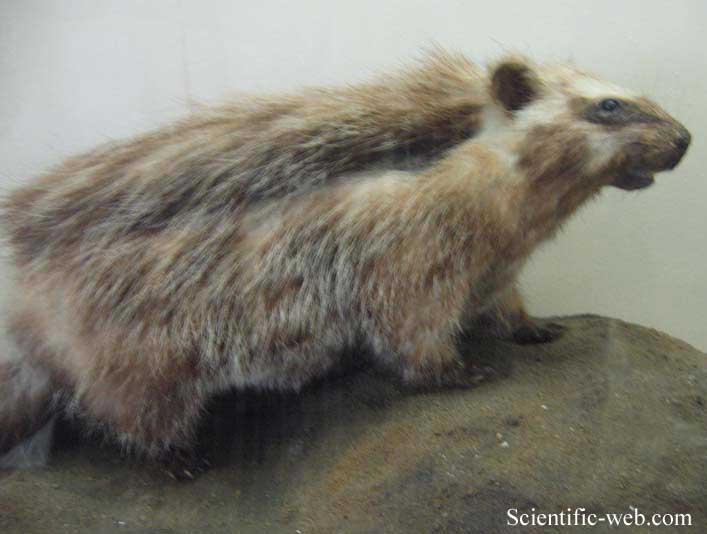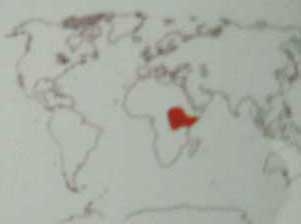Lophiomys imhausi, Photo: Michael Lahanas Cladus: Eukaryota
Name Lophiomys imhausi Milne-Edwards, 1867 Vernacular names Internationalization References * Lophiomys imhausi on Mammal Species of the World. The Maned Rat (or Crested Rat, as it is sometimes known) (Lophiomys imhausi), is a nocturnal, long-haired and bushy-tailed East African rodent that superficially resembles a porcupine.
The Maned Rat's body can grow up to 14 inches (360 mm) long, or 21 inches (530 mm) from head to tail. The coat consists of long, silver and black-tipped guard hairs over a dense, woolly, grey and white undercoat, with the face and limbs having short, black fur. A mane of longer, coarser black-and-white banded hairs extends from the top of the animal's head to just beyond the base of the tail. This mane is bordered by a broad, white-bordered strip of hairs covering an area of glandular skin. When the animal is threatened or excited, the mane erects and this strip parts, exposing the glandular area. The hairs in this area are, at the tips, like ordinary hair, but are otherwise spongy, fibrous, and absorbent. The rat is known to deliberately smear these hairs with poison from the bark of the Acokanthera schimperi, which it chews on, thus creating a defense mechanism that can sicken or even kill predators who attempt to bite it.[1] Lophiomys differs from typical Muridae in having the temporal fossa roofed over a thin plate of bone, rudimentary clavicles, and an opposable hallux. On these grounds it has been made the type of a family; its dentition, however, is typical Cricetine.[2] Diet Its diet in the wild consists largely of leaves, fruit, and other plant material, but has been known to eat meat, cereals, root vegetables, and insects in captivity. Food is eaten by sitting on its haunches and using its forepaws to bring food items to its mouth. Habitat The habitat of the maned rat ranges from nearly sea level, in Ethiopia and Somalia, to more typically the drier, highland forests and woodlands of Somalia, Ethiopia, South Sudan, Sudan, Tanzania, Uganda and Kenya. Fossil remains have been found as far north as Israel, however. They are often found in rocky areas or in hollow tree trunks and holes along the tops of ravines, and have also been found nesting among rocks on cliff-faces. Notes ^ Welsh, Jennifer (2 August 2011). "Giant Rat Kills Predators with Poisonous Hair". LiveScience. Retrieved 2 August 2011. References Schlitter & Agwanda (2004). Lophiomys imhausi. 2006. IUCN Red List of Threatened Species. IUCN 2006. www.iucnredlist.org. Retrieved on 11 May 2006. Database entry includes a brief justification of why this species is of least concern Source: Wikipedia, Wikispecies: All text is available under the terms of the GNU Free Documentation License |
|


